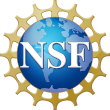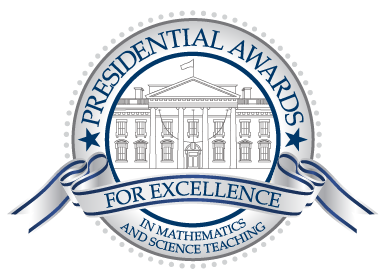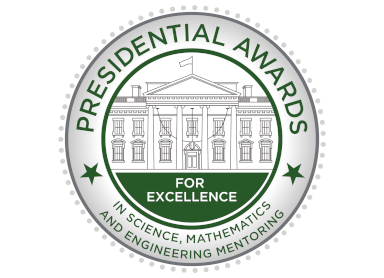Maria Savaiano
Minneapolis, MN | K-6, Science, 1993
What motivates you to contribute to excellence in STEM teaching?
Our future depends on the children in our classrooms today. At the fifth and sixth grade levels, students are very interested in learning about science. Each year I engaged them in different ways to learn about space exploration and wonders in the deep seas. These are interests of mine as a diver and curious person.
What has been the most transformative moment that affirmed your impact on STEM education?
Twice I took my students to U.S. Space Camp after participated NEWEST at NASA Lewis. In 1996 I put on an operetta entitled "Cosmic Pinball." and in 1997 another operetta, "Voyage to the Red Planet" based on future travel to Mars. This is hands on, active learning. When learning is fun and it is fun to learn, it is a winning combination.
Using your platform as a Presidential Awardee, how do you hope to advance our nation in STEM?
In 2001 I was selected to be the Museum Program Coordinator at Museum Magnet School in St. Paul working in partnership for with the Science Museum of Minnesota focusing on science Best Practices. Our museum process approach of using EXPLORE, EXPERIMENT, EXPLAIN and EXHIBIT as our model of curriculum delivery was a natural fit with the national Best Practices movement. Staff and parents wrote and received National Blue Ribbon of Excellence Award 2003.
Biography
From 1994-1995 I participated in the online World School for Adventure Learning with Minnesota polar explorer Will Steger. I shared how my students were involved in a pilot project with the Minneapolis, Minnesota Public Works Division to stencil anti-pollution messages near catch basins leading to Lake Calhoun. The messages read: "Do Not Dump Waste...Drains to Lake Calhoun>" Today's students will inherit the earth. By getting involved as environmental stewards, they will be more likely to keep this attitude in the future. My students were recognized by Amway, Newsweek Inc., and Northwest Airlines for acknowledging this environmental project and recognizing that kids can make a difference when they are involved in an adventurous, real-life problem-solving experience. I accompanied two of the students to Washington, D.C. where they spoke before an environmental house committee. In 1997 my students were among 10 teams named national finalists in the National Science Foundation Award to Community Innovation. My students developed a plan for communications systems to alert drivers to traffic signals near our school. We traveled to Walt Disney World's Epcot Center and presented ideas to a panel of judges and Epcot visitors. Sadly, we did not receive the $25,000 grant to further develop the idea but enjoyed the process. I have been leading group international and domestic trips for students and adults for over 20 years. The trips for adults continue to focus on science, history, culture and art around the world. I graduated from the University of Minnesota with a B.A. in 1968 and a M.Ed. in 1975. I received National Board Certification as Middle Childhood Generalist in 1997.
The views expressed in awardee profiles are those of the author and do not necessarily reflect the views of NSF or the PAEMST program.



